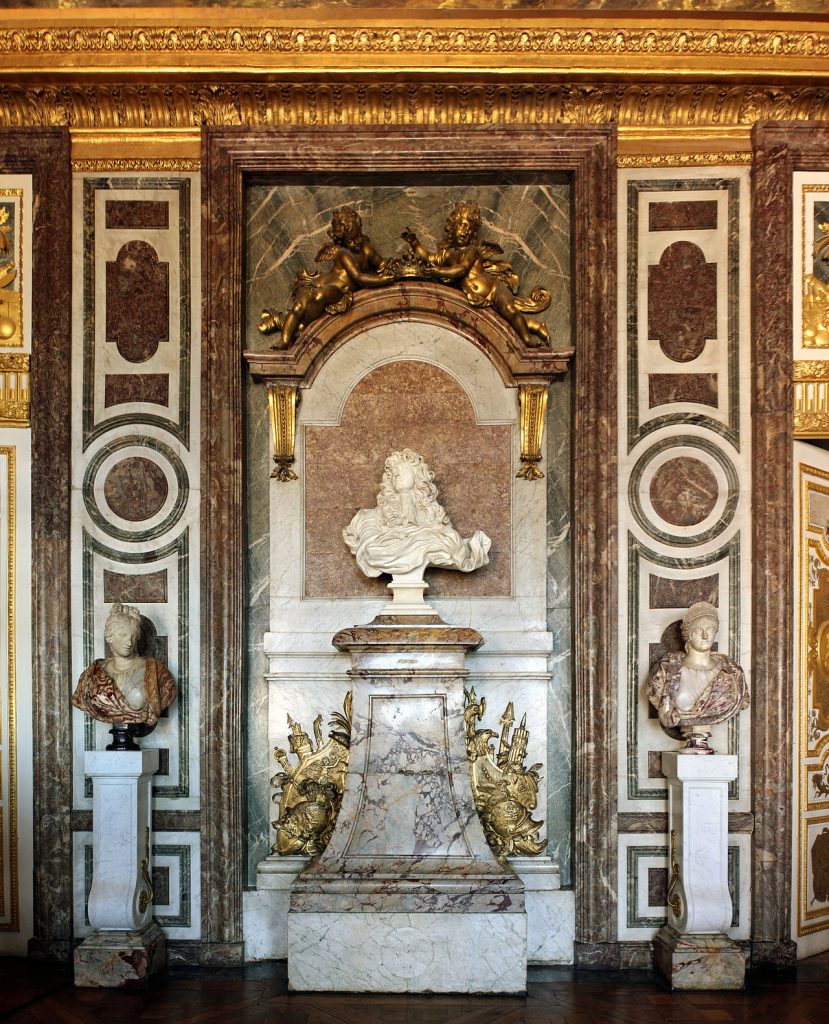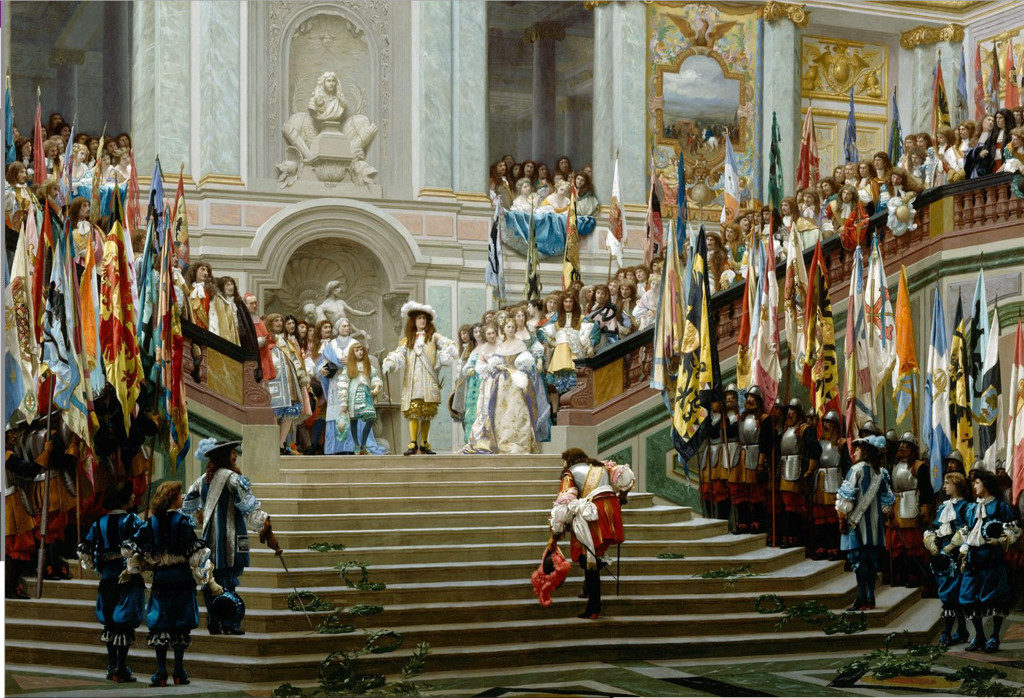Opulent and excessive, during the Baroque period the royal palace was a symbol of power for rulers and aristocracy. Versaille established the blueprint of what a royal palace should be.

Image source: https://en.wikipedia.org/wiki/Palace_of_Versailles#/media/File:Palace_2,_Versailles_August_2013.jpg
A Display of Power
The Baroque highly decorative and theatrical architecture appeared in Italy in the early 17th century and gradually spread across Europe. Originally introduced by the Catholic Church, as a means to combat the Reformation and the Protestant church, it reached its peak in the High Baroque when it was used in churches and palaces. This style took the basic elements of Renaissance architecture and made them more decorated and dramatic. The sacred and the profane came together under this style, which witnessed all kinds of vices as in royal courts as in the Church.

Image source: https://en.wikipedia.org/wiki/Palace_of_Versailles#/media/File:Gardens_of_Versailles,_22_June_2014_001.jpg
The Baroque royal palace was a symbol of power for important rulers, and therefore it should have been as sumptuous as possible. This Baroque icon features endless sequences of rooms and vast formal gardens. The interiors were monumental, and twisted columns, moldings, and other decorative elements occupied every available space. Grand stairways became a central element to symbolize and reinforce power structures. The eye is drawn upward, giving the illusion that one is looking into the heavens, and this was possible thanks to the masterful use of light, which streamed down from the ceiling and was reflected on gilding surfaces. Their decor is luxurious materials flaunted richness and opulence. In the meantime, lesser rulers and noblemen imitated this model with their great houses.
Versailles and Symbolism
The Palace of Versailles is one of the first and most influential Baroque royal palaces. Built near Paris in France, it was planned to honor King Louis XIV. This palace was the principal royal residence until the French Revolution in 1789. The magnificence of this building established the blueprint of what a royal palace should be, and inspired rulers across Europe, including the royal palace of Caserta in Italy, Würzburg in Germany, and the Royal Palace in Stockholm. The amazing structure of the Palace of Versailles reinforced the political power of Louis XIV. The imposing architecture was combined with symbolic imagery, to inspire awe and amazement in visitors.

The central staircase was usually a statement of power. The Ambassadors’ Staircase at Versailles was richly decorated in marble, gilt bronze, and paintings. The painted panels’ scenes on the first floor celebrate Louis’ military victories in the Franco-Dutch War. The bust of the King positioned at the very center of the staircase is a parallel with his central role in court life. The scale and design of the Versailles staircase inspired many others across Europe, including at the palaces of Caserta in Italy.

Jean-Léon Gérôme “Réception du Grand Condé” , (1878). This painting represents the original Ambassador’s Staircase.
The gallery was the strongest evidence of the owner’s influence. In this multi-purpose space, rulers used to show off their art collection and congregate the whole court, to assist the major daily event: the walk of the king through the gallery. In Versailles, this ceremony used to take part every day in the Galerie des Glaces, also known as Hall of Mirrors. The name is justified by great windows, reflected on the opposite wall by mirrors, overlook the gardens.

Image source: https://en.wikipedia.org/wiki/Palace_of_Versailles#/media/File:Versailles_Chapel.jpg
All palaces were divided into several apartments, and the daily ceremonies that occurred here in the royal court were determined by a carefully controlled system of etiquette: a visitor’s rank, for instance, was indicated by how far through the central rooms he was admitted. The supper was another public ritual, At Versailles, Louis XIV ate in the presence of his members of the households, in his bed-chamber. Of course, tables were often richly laden and decorated. Every detail proclaimed the power and wealth of the host.

Image source: https://en.wikipedia.org/wiki/Palace_of_Versailles#/media/File:Salon_de_V%C3%A9nus.jpg
The principal bed-chamber was the most richly furnished room in the whole palace. Often this room was just ceremonial and symbolic of the royal presence. Louis XIV‘s sleeping chamber was the setting for such ceremonies as the daily rising and going to bed. The bed was the most expensive piece of furniture with a throne-like setting. For women, the daily ceremony of the toilette prompted the creation of a sophisticated toilette with mirrors and a silver structure. This French style was adopted all over Europe.

Image source: https://en.wikipedia.org/wiki/File:Appartement_du_Roi_(Versailles).jpg
The grand scale Baroque garden followed the ruler’s tastes, but they present common features. They were expressions of power over nature. André Mollet gave us further information in his garden design guide. This important guide was strictly followed in that period and suggests several key features, such as elms or lime trees, bosquets, and series of garden statues or fountains.

Image source: https://en.wikipedia.org/wiki/Palace_of_Versailles#/media/File:Gardens_of_Versailles,_22_June_2014_002.jpg
Info source:
https://www.vam.ac.uk/articles/inside-the-baroque-palace https://en.wikipedia.org/wiki/Baroque_architecture
https://en.wikipedia.org/wiki/Palace_of_Versailles
http://en.chateauversailles.fr/
